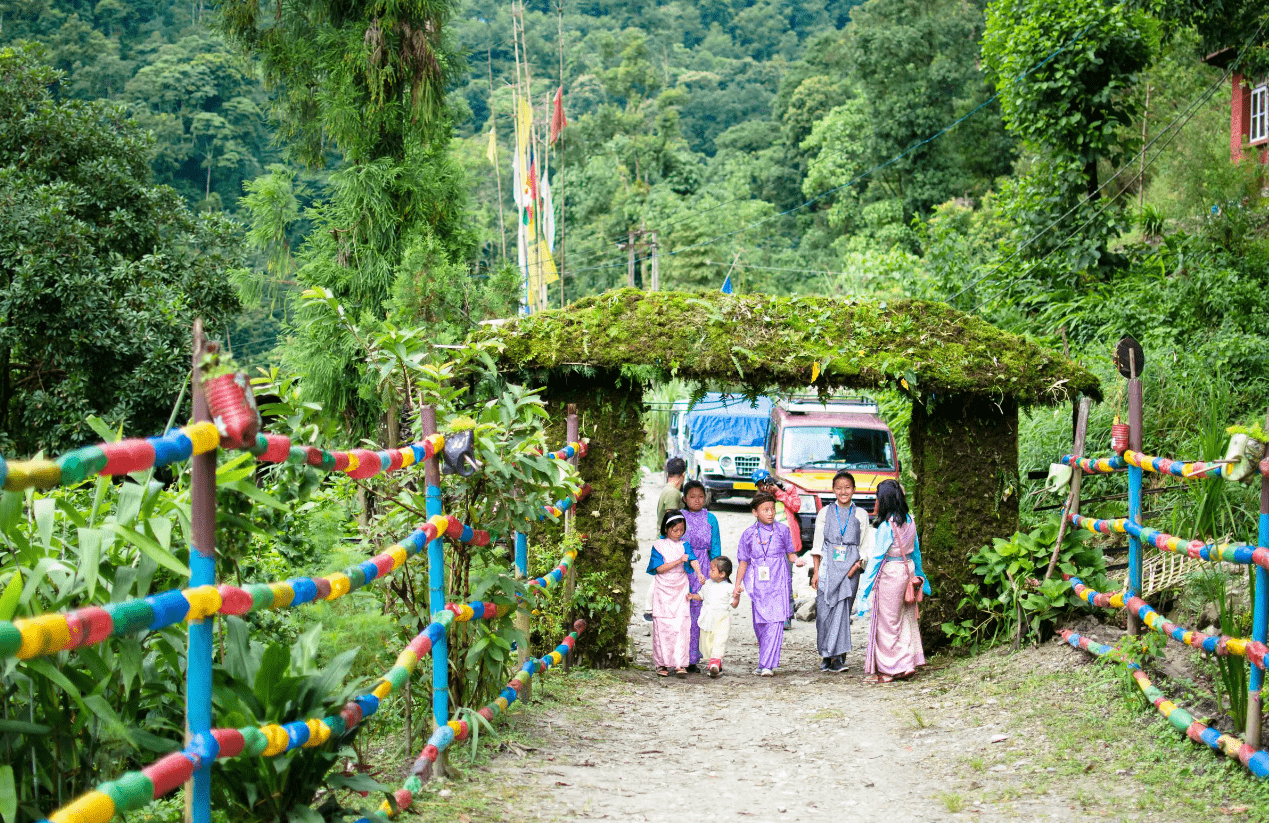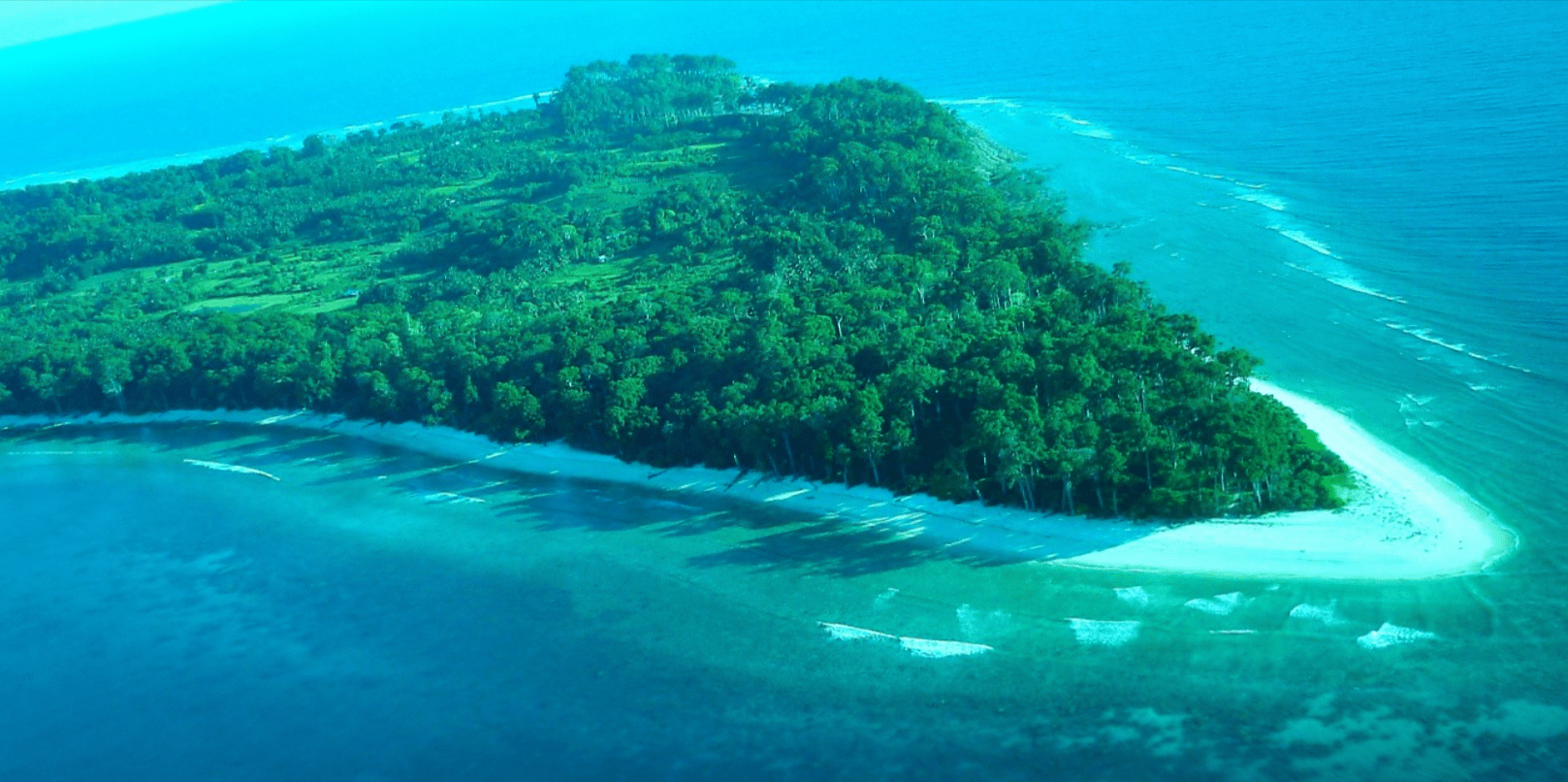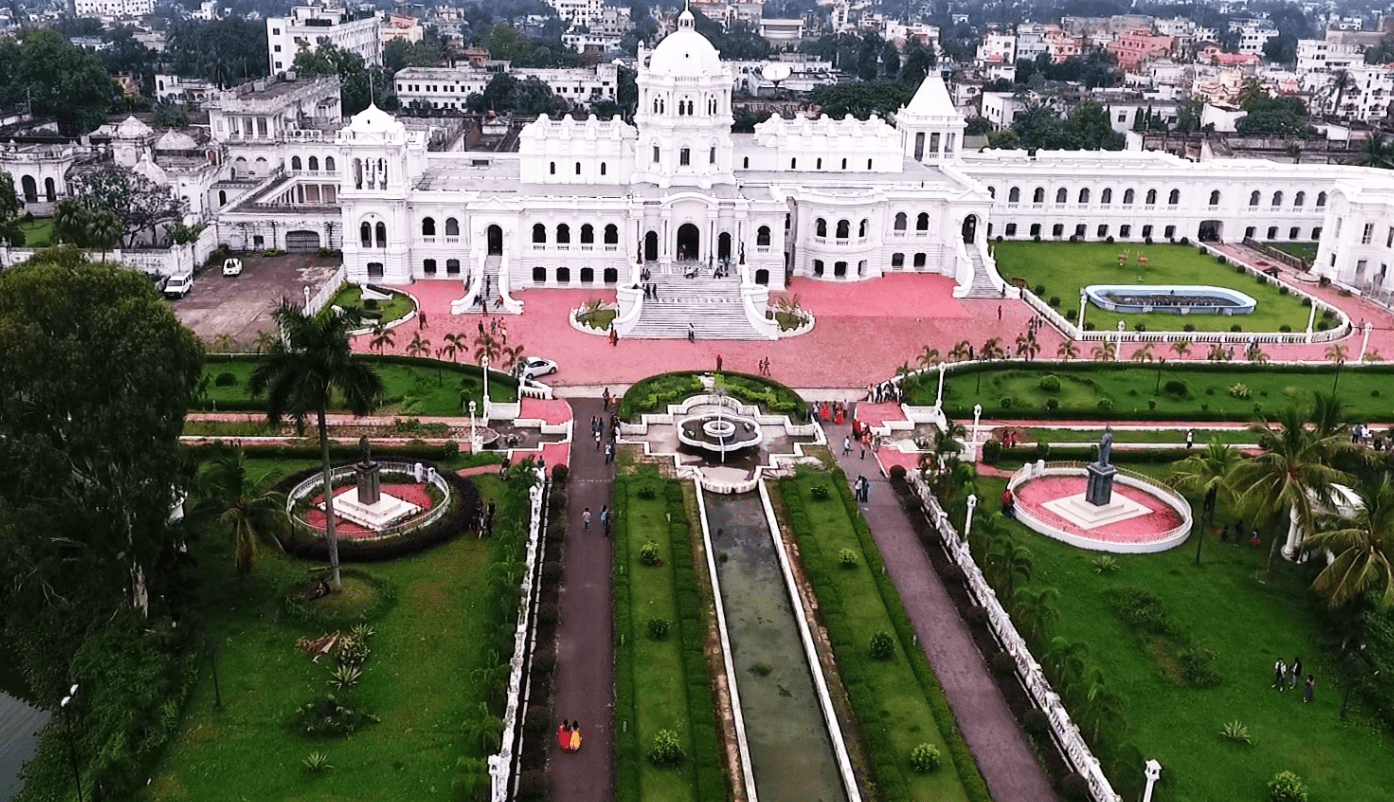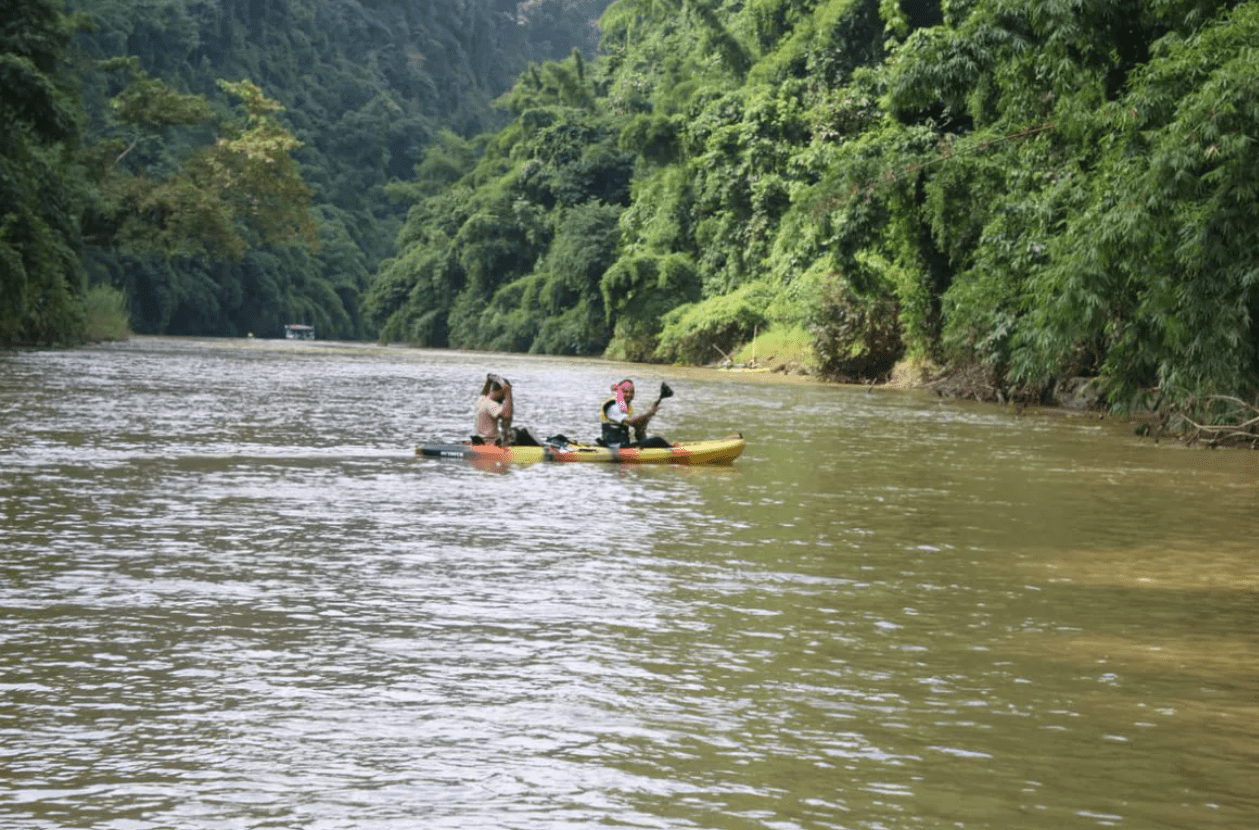Dzongu: It was nearing the end of our North Sikkim tour when we realized we had a few extra days but didn’t want to revisit Gangtok or Pelling. That’s when our driver suggested we explore Dzongu, a Lepcha Reserve Area. A reserve area for a community? Intriguing, right? And the thought of an untouched mountain hamlet in Sikkim was certainly appealing. So, we made the decision to head to Dzongu.
“But you’ll need a permit to enter,” our driver cautioned, noticing our concern. He quickly added, “You can get it at Mangan.” I immediately began searching for information about Dzongu. While I found a few homestay options, the name ‘Tingvong’ stood out to me. Being the trip planner, I decided we should visit Tingvong.
Choosing Tingvong turned out to be one of my best decisions, and we never regretted our time there for a moment.
About Dzongu
Dzongu, nestled in the North district of Sikkim, is a serene area surrounded by steep mountains and picturesque valleys, situated just before the Himalayas begin their majestic rise. The area is relatively untouched by commercialization and is home to the Lepchas, Sikkim’s original inhabitants. Dzongu is a sanctuary for both human life and nature, with its dense forests, cascading waterfalls, and peaceful villages. Designated as a special reserve for the Lepcha community in 1960, when Sikkim was still a kingdom ruled by Chogyal Palden Thondup Namgyal, Dzongu remains one of the last places where Lepcha traditions and ancient animistic rituals are still practiced.
Where is Dzongu located?
Dzongu is located in North Sikkim, spanning approximately 80 square kilometers and divided into Lower, Middle, and Upper Dzongu. The Rongyang Chu, a tributary of the Teesta River, separates Dzongu into northern Upper Dzongu and southern Lower Dzongu. It falls under the administrative jurisdiction of the Mangan subdivision.
Lower Dzongu is home to villages like Passingdang, Lingdem, and Hee-Gyathang, which are accessible by road. Upper Dzongu includes villages like Tingvong, Kusong, Sakyong, Pentong, and Lingthem, some of which require trekking to reach.
Why should you visit Dzongu?
Dzongu is like something out of a fairy tale, with picturesque and quaint villages dotting the region. It’s a place where you’ll encounter cold streams on your way to hot springs, and numerous waterfalls surprise you along the way. The lush green forests, full of exotic flora and fauna, cover the area, and the small traditional houses in the hamlets each boast beautiful gardens.
Remember the picture you used to draw as a child—the one with mountains, a small house with a garden, and flowers? Dzongu is just like that. Colorful prayer flags flutter in the wind, and the green fields of paddy and cardamom are a feast for the eyes. On a clear day, the Kanchenjunga mountain range dominates the landscape, and the people you meet here are as warm and simple as the nature around them.
If these reasons aren’t enough, read on to discover the activities and attractions Dzongu has to offer.
Entry to Dzongu
Dzongu is secluded from the world by the mighty Teesta River, which separates it from the rest of North Sikkim. There are two entry points into Dzongu. You must cross the Teesta River to enter from either side. Pheedand, near Dikchu, is one entry point into Sangtok, a village in Lower Dzongu.
The other entry point is through Sankalang, near Mangan, the district headquarters of North Sikkim. From here, you can reach Upper Dzongu after crossing Passingdang village.
Previously, Upper Dzongu was accessible from both entry points. However, after a major landslide in August 2016, the Teesta River changed its course, forming a large lake that cut off Upper Dzongu, including Tingvong, from the rest of the area. We had to cross the lake on a raft and take another jeep to reach Tingvong, Upper Dzongu.
The motorable road remains unusable, but a bamboo bridge has been constructed over the lake. Instead of using the raft, you can now walk across the bamboo bridge and then take a jeep to the villages in Upper Dzongu.
Things to do in Dzongu and places to visit at Dzongu
Dzongu offers a wealth of activities and attractions, all set against a backdrop of stunning natural beauty. The Lepcha lifestyle, closely connected with nature, provides a unique cultural experience. Whether you’re seeking peace in nature, interested in bird watching, or looking for a relaxing weekend getaway, Dzongu has something to offer.
Go for village walks
Exploring Dzongu is best done on foot, wandering through its small, serene villages. The place feels frozen in time, peaceful and secluded. You can stroll through the villages, breathing in the fresh air and enjoying the swaying paddy and cardamom fields. It’s not uncommon to find yourself alone, with no one else in sight—a true testament to Dzongu’s beauty.
You can walk through villages like Passingdang, Tingvong, Sakyong, and Lingdong to experience the traditional Lepcha way of life. Each village has its own unique charm.
Lingthem village
Trek from Passingdang to Lingthem through quiet bamboo groves to reach this village, located deep within a forest and home to a beautiful monastery. If you visit during December, you can witness the Namsoong Festival’s masked dance, which is similar to the Kagyed Dance at Phodong.
Hee Gyathang Village
This charming village, accessible by jeep from Passingdang, is home to a small lake surrounded by prayer flags. The locals believe the lake was formed by the tears of a goddess who fell in love with another celestial being. The Heemos clan believes that if the fishes in the lake die, so will their clan. This deep connection between the Lepchas and nature is truly special. Similar close bonds between people and nature can be found among the Khasis in Meghalaya and the Galo tribe in Arunachal Pradesh.
Pentong Village
If you want a closer view of the mountains, trek to Pentong village. It’s the last inhabited village in the area and can be reached by trekking through forests. Two hillocks here offer perfect views of the mountain ranges.
Trekking
Dzongu is a paradise for trekkers, with a variety of routes catering to different difficulty levels and time constraints. The Tholung Monastery trek is a one-day trek from Tingvong that takes you to a breathtaking location.
For avid trekkers, the Keushong Valley Trek is a more challenging option, taking around five days round trip. The Keushong Lake, nestled in the valley, is a beautiful destination.
You can also trek to Pentong village, the last inhabited village closest to the mountains. This is another one-day trek from Tingvong, and the stunning views of the Sleeping Buddha make the effort worthwhile.
There are many other trekking routes in the area. Just ask your host and take a guide with you to discover the joys of trekking in Dzongu.
Visit the traditional Lepcha Museum, Namprikdang
The traditional Lepcha Museum is a Lepcha house built on strong stone pillars. The architecture is fascinating, with a stone base designed to withstand earthquakes and flash floods. The house is near the Sangkalang Police checkpost, at the confluence of the Teesta River and Rongyang Chu.
Enjoy the solitude at Lingzya or Lingzey Waterfall
Dzongu’s landscape is dotted with waterfalls, but the one at Upper Lingzya village stands out. Located on the way to Pentong and Sakyong, the waterfall drops 300 feet and is a visual delight. Locals often fish at the waterfall’s edge.
Visit the ancient Tholung Monastery
This quaint monastery was built in the 18th century to protect ancient manuscripts and relics from invading Gorkhas. The Tholung Monastery houses some of the rarest Buddhist artifacts and manuscripts. Every three years, the monastery opens its doors to display these precious relics.
Even if you’re not interested in the cultural significance, the surroundings will captivate you. A beautiful waterfall cascades into a deep ravine nearby, and the Lepchas believe that departed souls pass through the waterfall before moving on to the other world. There are also caves around the area that are believed to have been used by Guru Rinpoche for meditation. Above the monastery, you’ll find a traditional Lepcha hanging bridge.
Visit the hot spring
Accessible only after crossing an icy-cold rivulet, the hot springs near Lingdem village in Lower Dzongu are hidden within the forest. The locals believe the spring’s water has medicinal properties. There are two log huts, one for each gender.
Take a dip in the hot spring surrounded by nature, with the forest all around you. It’s an experience you’ll treasure for a long time.
Marvel at the traditional bamboo bridges made by the Lepchas
The traditional bamboo bridges built by the Lepchas are engineering marvels. Made from long bamboo sections, these bridges can be found in many parts of Dzongu. You’ll see them at Passingdang and above the Tholung Monastery.
Go for birdwatching and butterfly watching
Dzongu is home to more than 200 species of birds and around 70 species of butterflies. The upper part of Dzongu has snow-capped mountains,
while the lower part features sub-tropical and temperate forests. This diversity attracts many different bird species.
If you’re an avid bird watcher, carry your equipment and spot some rare species, such as the Hill Partridge, Rufous-throated Partridge, Rufous-necked Hornbill, Lesser Yellownape, Green-tailed Sunbird, and many more.
Dzongu is also home to around 70 species of butterflies, including the Blue Duke, Bhutan Glory, Blue Emperor, and more.
What should you not miss when visiting Dzongu?
- Stay with a Lepcha family at a homestay in Dzongu to experience their traditional lifestyle and cuisine.
- Take long walks through the forests and enjoy the serene environment.
- Make sure to visit the hot spring and take a dip for a unique experience.
- If you’re up for it, go on a trek to Pentong village or Tholung Monastery.
- Visit the Tholung Monastery to see the ancient manuscripts and relics.
- Cross a traditional bamboo bridge and marvel at the Lepcha engineering skills.
Dzongu Permit
Since Dzongu is a restricted area, visitors need a permit to enter. For Indian nationals, this is called an Inner Line Permit (ILP), while for foreigners, it’s a Protected Area Permit (PAP). You can get the ILP at Mangan (Sikkim’s district headquarters) on any working day from 10 AM to 4 PM.
To obtain a permit, you need to submit two passport-sized photographs, a copy of your voter ID card or Aadhar card, and the ILP form, which you can get from the SDM office in Mangan.
For foreign nationals, a PAP is required, which is usually arranged by the tour operator or homestay owner. The PAP is only issued for groups of two or more people, so solo travelers might have difficulty getting one.
How to reach Dzongu
To reach Dzongu, you first need to get to Mangan, the nearest town. You can take a shared jeep from Gangtok to Mangan, which takes around 3 to 4 hours. From Mangan, you can either take a shared jeep to Passingdang (Lower Dzongu) or Tingvong (Upper Dzongu) or hire a private vehicle.
If you’re traveling by air, the nearest airport is Bagdogra in West Bengal. From Bagdogra, you can take a taxi to Gangtok and then follow the route described above to reach Dzongu.
If you’re traveling by train, the nearest railway station is New Jalpaiguri (NJP) in West Bengal. From NJP, you can take a taxi to Gangtok and then follow the same route to reach Dzongu.
Alternatively, you can hire a taxi directly from Bagdogra or NJP to Dzongu, but this option is usually more expensive.
Dzongu Accommodation
There are several homestays in Dzongu, mostly run by the Lepcha families. Staying at a homestay is the best way to experience the local culture and traditions. The homestays offer comfortable accommodation and serve traditional Lepcha cuisine, which is a unique experience in itself.
Some popular homestays in Dzongu include:
- Mayallyang Homestay in Passingdang
- Dzongu Lee Homestay in Lingthem
- Lingthem Lyang Homestay in Lingthem
- Aboo Lepcha Homestay in Tingvong
- The Mayal Lyang Homestay in Passingdang
These homestays offer basic amenities but provide an authentic experience of living in a traditional Lepcha home.
Dzongu Food
The cuisine in Dzongu is simple yet delicious, with a focus on locally sourced ingredients. The Lepchas primarily eat rice, vegetables, and meat, and their dishes are flavored with minimal spices.
Some traditional Lepcha dishes you should try include:
- Gundruk: Fermented leafy greens served with rice.
- Kinema: Fermented soybeans cooked with bamboo shoots and served with rice.
- Sinki: Fermented radish tap roots, usually eaten as a pickle.
- Churpi: Fermented cheese made from yak milk.
- Sael Roti: A traditional rice bread usually eaten during festivals.
- Momos: Dumplings filled with meat or vegetables, a popular snack in Sikkim.
Don’t miss the opportunity to try these dishes during your stay in Dzongu.
Dzongu FAQs
What is the best time to visit Dzongu?
The best time to visit Dzongu is from October to May when the weather is pleasant, and the skies are clear. This is also the ideal time for trekking and outdoor activities. The monsoon season (June to September) should be avoided due to heavy rainfall and landslides.
Is Dzongu safe for tourists?
Yes, Dzongu is very safe for tourists. The locals are friendly and welcoming, and the area is relatively untouched by crime. However, it’s always a good idea to take basic precautions, such as not venturing out alone at night and keeping your valuables secure.
Can foreigners visit Dzongu?
Yes, foreigners can visit Dzongu, but they need a Protected Area Permit (PAP), which is usually arranged by the tour operator or homestay owner. The PAP is only issued for groups of two or more people.
What should I pack for a trip to Dzongu?
When visiting Dzongu, it’s important to pack warm clothing, especially if you’re traveling in the winter months. A good pair of trekking shoes is essential if you plan to go trekking. Also, bring a flashlight, as electricity can be unreliable in some areas.
Can I visit Dzongu with my family?
Yes, Dzongu is a great destination for a family trip. The peaceful environment, beautiful landscapes, and warm hospitality of the locals make it a perfect place for a family vacation. Just make sure to get the necessary permits before you travel.
Dzongu, with its pristine natural beauty and rich cultural heritage, offers a unique travel experience unlike any other in Sikkim. Whether you’re seeking adventure or simply want to relax in a peaceful environment, Dzongu is a destination that will leave you with unforgettable memories.



